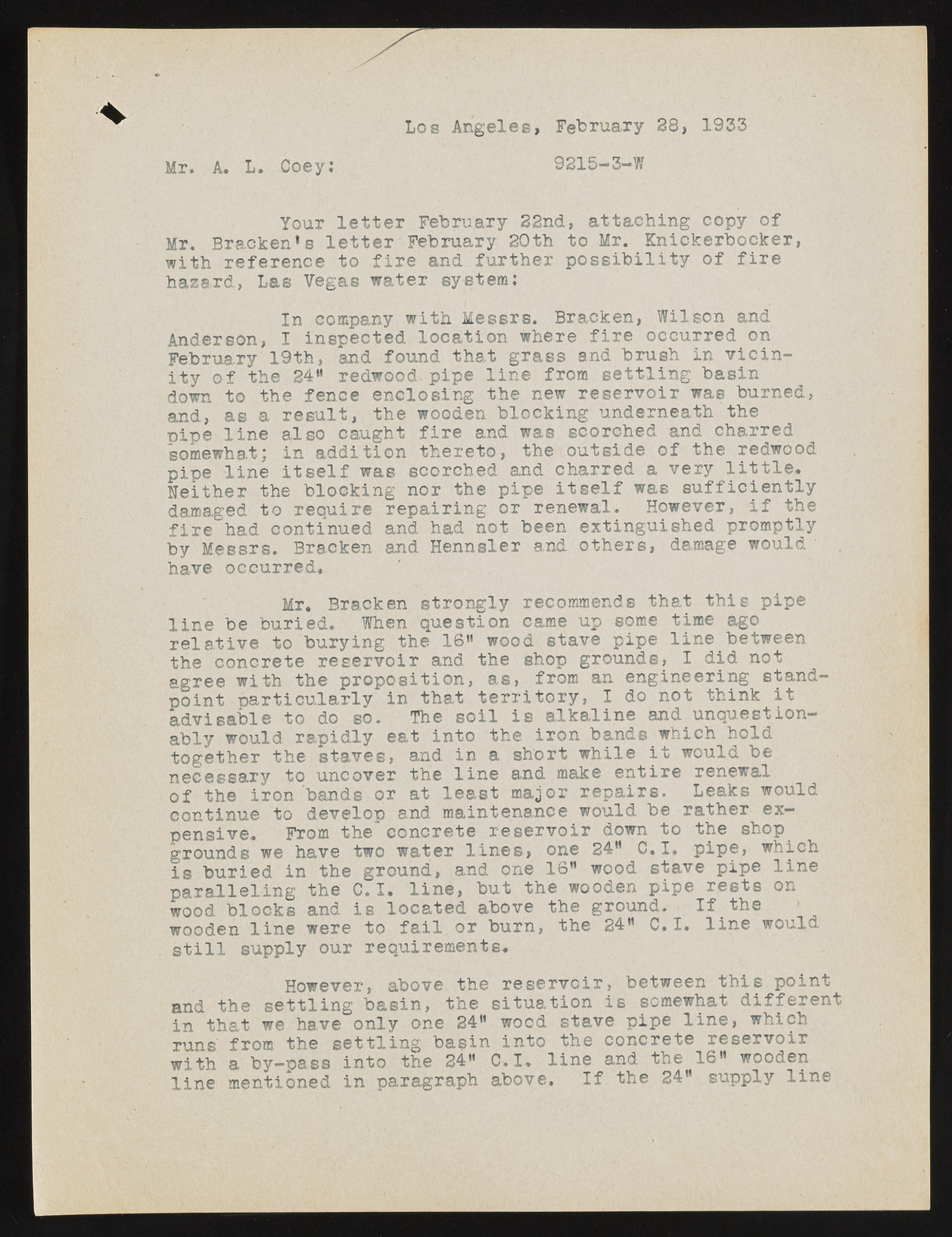Copyright & Fair-use Agreement
UNLV Special Collections provides copies of materials to facilitate private study, scholarship, or research. Material not in the public domain may be used according to fair use of copyrighted materials as defined by copyright law. Please cite us.
Please note that UNLV may not own the copyright to these materials and cannot provide permission to publish or distribute materials when UNLV is not the copyright holder. The user is solely responsible for determining the copyright status of materials and obtaining permission to use material from the copyright holder and for determining whether any permissions relating to any other rights are necessary for the intended use, and for obtaining all required permissions beyond that allowed by fair use.
Read more about our reproduction and use policy.
I agree.Information
Digital ID
Permalink
Details
More Info
Rights
Digital Provenance
Publisher
Transcription
Mr. A. L. Coey: Los Angeles, February 28, 1933 9215-3-W Your l e t t e r February 22nd, attaching copy o f Mr. Bracken's l e t t e r February 20th to Mr. Knickerbocker, w ith referen ce to f i r e and fu rth er p o s s ib ilit y o f f i r e hazard, Las Vegas water system: In company w ith Messrs. Bracken, Wilson and Anderson, I inspected lo c a tio n where f i r e occurred on February 19th, and found that grass and brush in v ic in i t y o f the 24” redwood pipe lin e from s e t t lin g basin down to the fence en closin g the new r e s e r v o ir was burned, and, as a re s u lt, the wooden blockin g underneath the pipe lin e also caught f i r e and was scorched and charred somewhat; in a d d ition th ereto , the outside o f the redwood pipe lin e i t s e l f was scorched and charred a very l i t t l e . N eith er the blockin g nor the pipe i t s e l f was s u ffic ie n t ly damaged to req u ire rep a irin g or renewal. However, i f the f i r e had continued and had not been extinguished promptly by Messrs. Bracken and Hennsler and others, da,mage would have occurred. Mr. Bracken stron gly recommends that th is pipe lin e be buried. When question came up some time ago r e la t iv e to burying the 16" wood stave pipe lin e between the concrete r e s e r v o ir and the shop grounds, I did not agree w ith the p ro p o sitio n , as, from an engineering standpoint p a r tic u la r ly in that t e r r it o r y , I do not think i t ad visab le to do so. The s o il is a lk a lin e and unquestionably would ra p id ly eat in to the iron bands which hold togeth er the staves, and in a short w h ile i t would be necessary to uncover the lin e and make e n tir e renewal o f the iron bands or at le a s t major rep a irs . Leaks would continue to develop and maintenance would be rather expensive. From the concrete r e s e r v o ir down to the shop grounds we have two water lin e s , one 24H C .I. pipe, which is buried in the ground, and one 16” wood stave pipe lin e p a r a lle lin g the C .I. lin e , but the wooden pipe res ts on wood blocks and is lo ca ted above the ground. I f the wooden lin e were to f a i l or burn, the 24" C .I. lin e would s t i l l supply our requirements. However, above the r e s e r v o ir , between th is poin t and the s e t t lin g basin, the situ a tio n is somewhat d iffe r e n t in that we have only one 24" wood stave pipe lin e , which runs from the s e t t lin g basin in to the concrete re s e rv o ir with a by—pass in to the 24" C .I. lin e and the 16tt wooden lin e mentioned in paragraph above. I f the 24" supply lin e

